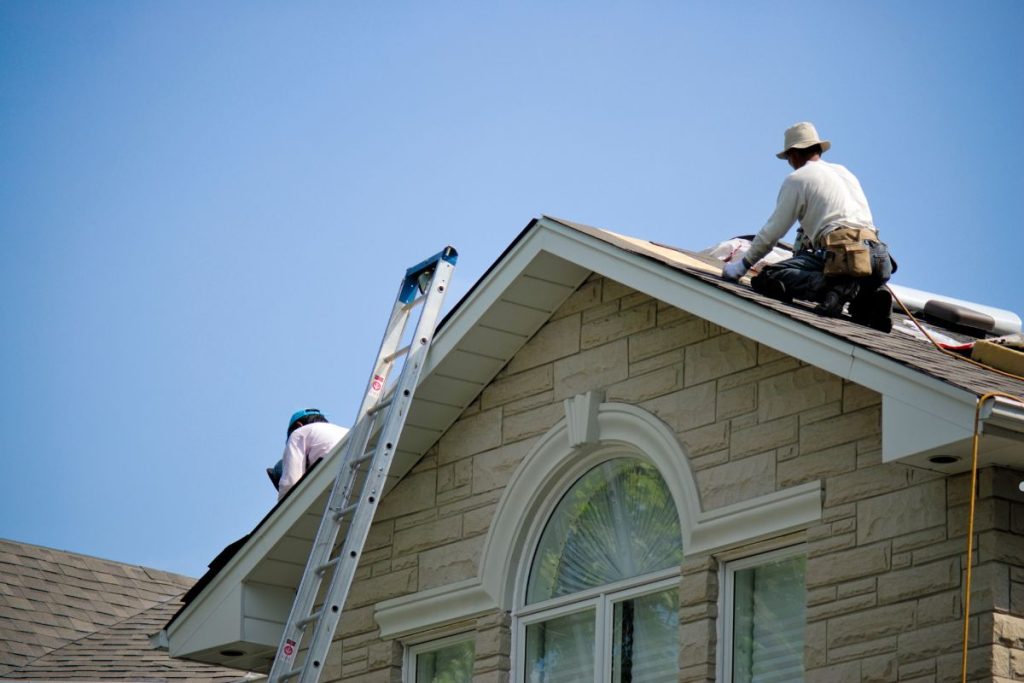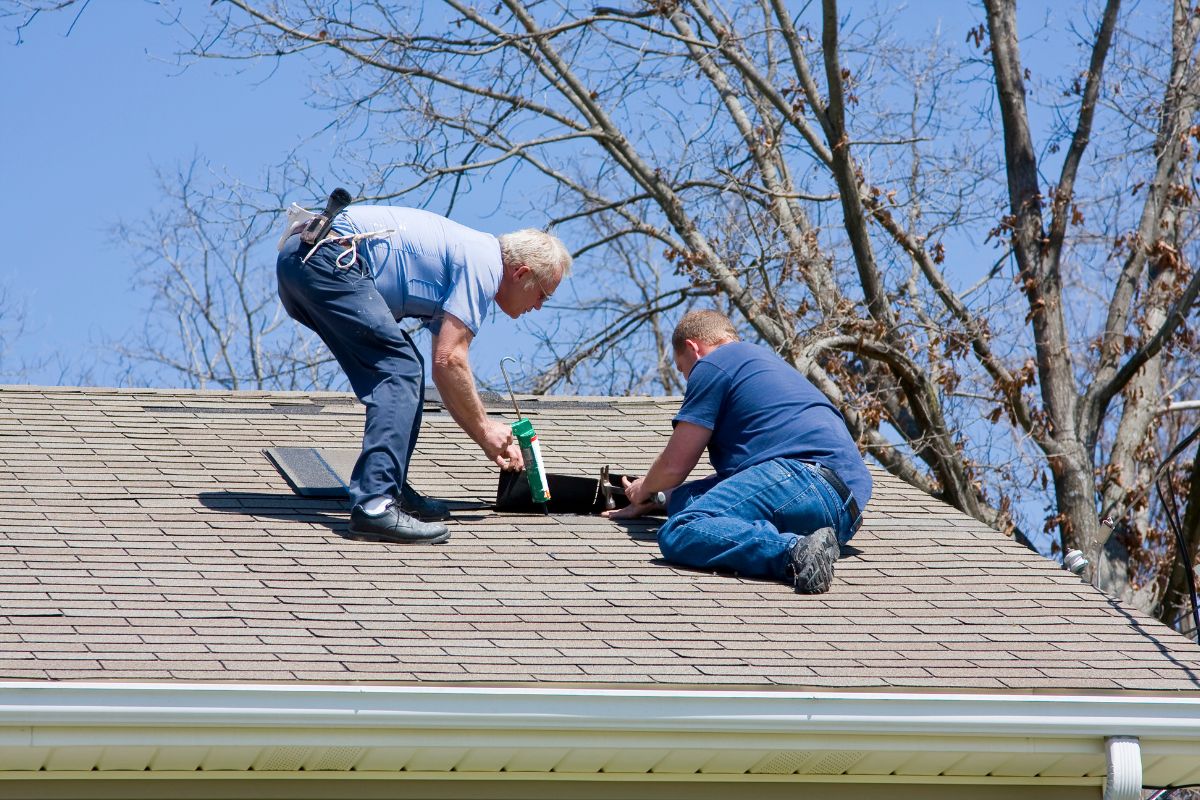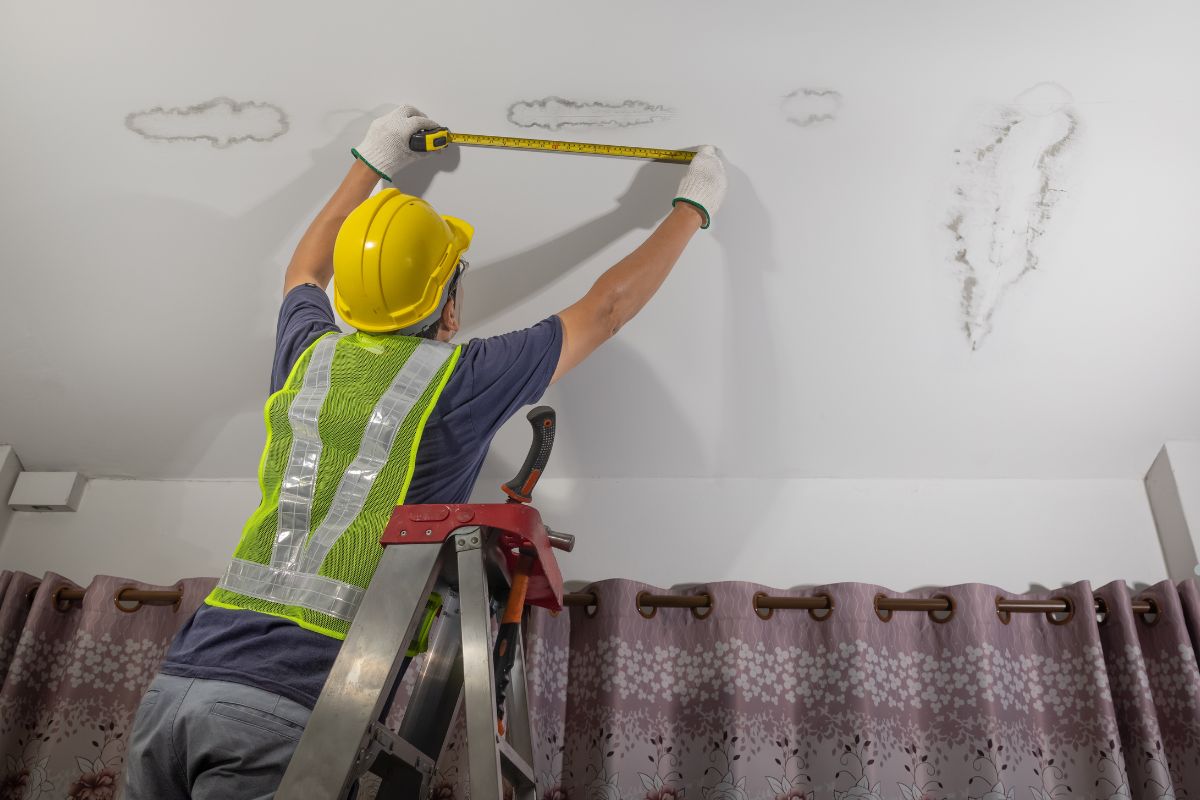
A leaking roof can quickly turn into a homeowner’s nightmare, causing significant water damage and potential structural problems. The good news? Many roof leaks can be addressed effectively with the right knowledge and approach. This comprehensive guide will walk you through identifying, temporarily fixing, and permanently resolving roof leaks, helping you determine whether a DIY solution or a professional roofing contractor is the best course of action. [Call us] today for a free roof inspection and get your leak resolved quickly!
Understanding Roof Leaks

Roof leaks occur when the roof’s protective barrier is compromised, allowing water to infiltrate your home. These leaks can result from various factors, including weather damage, aging materials, or improper installation. Ignoring a roof leak can lead to costly repairs down the road, including damage to ceilings, walls, insulation, and even the structural integrity of your home. Regular roof maintenance and prompt attention to any signs of a leak are crucial for preventing long-term problems.
Common Causes of Roof Leaks
Pinpointing the cause of a roof leak is the first step toward finding the right solution. Here are some of the most common culprits:
- Damaged Shingles: Missing, cracked, or curled shingles are a primary entry point for water.
- Flashing Problems: Flashing, the metal material installed around chimneys, vents, and other roof penetrations, can corrode or become dislodged, leading to leaks.
- Roof Vents: Cracks or loose seals around roof vents can allow water to seep in.
- Pipe Boots: The rubber boots that seal around plumbing pipes can crack and deteriorate over time.
- Ice Dams: In colder climates, ice dams can form at the edge of the roof, preventing melting snow from draining properly and forcing water under the shingles.
Don’t let a small leak turn into a major problem! Call us for a professional inspection and quick resolution. Click here to schedule your free estimate.
Signs of a Roof Leak
Identifying a roof leak early can save you time and money. Be on the lookout for these telltale signs:
- Ceiling Stains: Water stains or discoloration on your ceiling are a clear indication of a leak above.
- Attic Leaks: Check your attic for water stains on the rafters, insulation, or flooring.
- Water Spots: Damp spots on walls or around windows can also point to a roof leak.
- Mold Growth: Mold or mildew growth in your attic or on your ceilings is a sign of excessive moisture, often caused by a roof leak.
When to DIY a Roof Leak Repair
For minor leaks and homeowners comfortable with basic repairs, a DIY approach can be a cost-effective solution. Simple repairs like replacing a few damaged shingles or sealing around a vent may be within your skill set. However, always prioritize safety. Use a sturdy ladder, wear appropriate safety gear (including non-slip shoes), and never attempt repairs during inclement weather. If you are unsure or uncomfortable, it’s best to [call us] for a professional.
Not sure if you can handle the repair yourself? Err on the side of caution. Call us for a free consultation and expert advice.”
When to Call a Roofing Professional
Certain roof leaks require the expertise of a qualified roofing professional. Consider calling a pro in these situations:
- Extensive Roof Damage: If a large area of your roof is damaged, or if the damage is widespread, professional repair is essential.
- Structural Damage: If you suspect damage to the roof’s underlying structure, such as the rafters or decking, consult a professional immediately.
- Difficulty Locating the Leak: If you can’t pinpoint the source of the leak, a professional roofer can use specialized equipment to find it.
- Lack of Experience: If you’re not comfortable working on your roof or lack the necessary skills, hiring a pro is the safest option.
Temporary Patching Techniques
Before you can permanently fix a leak, you may need to apply a temporary patch to prevent further water damage. Here are a few options:
- Tarping: Cover the affected area with a tarp and secure it with nails or staples. This is a good short-term solution for large leaks.
- Roof Sealant: Apply roof sealant to cracks or gaps around shingles, vents, or flashing. This is best for small, localized leaks.
Replacing Damaged Shingles
Replacing damaged shingles is a common DIY roof repair. Here’s a basic overview:
- Remove the damaged shingle: Use a pry bar to lift the surrounding shingles and remove the nails holding the damaged shingle in place.
- Prepare the area: Clean the area beneath the shingle and apply roofing cement.
- Install the new shingle: Slide the new shingle into place and secure it with roofing nails.
- Seal the edges: Apply roofing sealant to the edges of the new shingle to create a watertight seal.
Sealing Around Vents and Pipes

Leaks around roof vents and pipes are often caused by cracked or deteriorated seals. To repair these leaks:
- Inspect the seal: Check the rubber boot or flashing around the vent or pipe for cracks or damage.
- Clean the area: Remove any debris or old sealant.
- Apply new sealant: Apply a generous layer of roofing sealant around the base of the vent or pipe.
Comprehensive Roof Inspection
A professional roof inspection is a thorough assessment of your roof’s condition. It typically includes a visual inspection of the shingles, flashing, vents, and other components, as well as an assessment of the roof’s underlying structure. A professional inspection can identify hidden leaks and potential problems before they become major issues. [Call us] for a free inspection report.
Flashing Repair and Replacement
Damaged or corroded flashing is a common cause of roof leaks. Repairing or replacing flashing requires specialized skills and tools. A roofing professional can properly assess the damage and install new flashing to create a watertight seal around chimneys, vents, and other roof penetrations.
Roof Replacement
In some cases, a roof replacement is the best solution for extensive roof damage. If your roof is old, severely damaged, or has multiple leaks, a new roof may be the most cost-effective option in the long run. A new roof will not only protect your home from water damage but also improve its energy efficiency and curb appeal.
Regular Roof Maintenance
Preventing roof leaks is easier than fixing them. Regular roof maintenance can help extend the life of your roof and prevent costly repairs. Here are a few tips:
- Clean your gutters regularly: Clogged gutters can cause water to back up under the shingles, leading to leaks. Regular gutter maintenance helps prevent water damage and protects your roof from leaks.
- Remove debris from your roof: Branches, leaves, and other debris can trap moisture and damage your shingles.
- Inspect your roof regularly: Look for signs of damage, such as missing or cracked shingles, and address any problems promptly.
Proper Ventilation
Proper roof ventilation is crucial for preventing moisture buildup and extending the life of your roof. Adequate ventilation helps regulate the temperature and humidity in your attic, preventing condensation that can lead to mold growth and water damage.
Protecting Your Home from Roof Leaks
Addressing roof leaks promptly and effectively is essential for protecting your home from water damage and maintaining its structural integrity. Whether you choose to tackle minor repairs yourself or hire a professional for more complex issues, taking proactive steps to maintain your roof will help ensure its.
Frequently Asked Questions About Roof Leaks
How much does it cost to repair a roof leak?
The cost of roof leak repair varies depending on the severity of the leak, the type of damage, and the location of the leak. Simple repairs, such as replacing a few shingles, may cost a few hundred dollars, while more complex repairs, such as flashing replacement or structural repairs, can cost several thousand dollars.
Does homeowner’s insurance cover roof leaks?
Homeowner’s insurance typically covers roof leaks that are caused by sudden and accidental events, such as storms or falling trees. However, it may not cover leaks that are caused by gradual deterioration, neglect, or lack of maintenance.
How long does a roof last?
The lifespan of a roof depends on the type of roofing material, the climate, and the quality of installation. Asphalt shingle roofs typically last 15-20 years, while tile roofs can last 50 years or more.
What are the signs of a serious roof leak?
Signs of a serious roof leak include:
- Water stains that are spreading or getting darker
- Sagging ceilings or walls
- Visible mold growth
- Water dripping from the ceiling
Can I repair a roof leak myself?
If you’re comfortable working on your roof and have the necessary skills and tools, you may be able to repair a minor roof leak yourself. However, it’s important to prioritize safety and take the appropriate precautions to avoid injury. If you’re unsure or uncomfortable, it’s best to hire a professional roofer. For expert assistance, Contact Us today and let our professionals handle your roofing needs!
